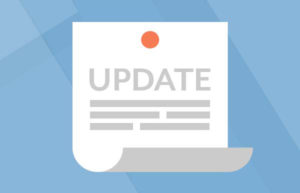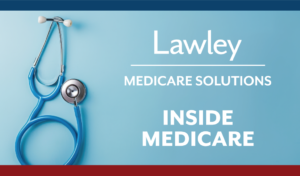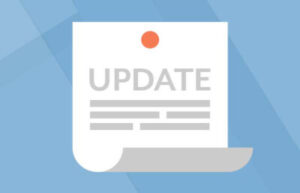ACA Employer Mandate Penalty Assessment Letters


Pay or Play Penalties—Enforcement
The Affordable Care Act (ACA) requires applicable large employers (ALEs) to offer affordable, minimum value health coverage to their full-time employees or pay a penalty. This employer mandate provision is also known as the “employer shared responsibility” or “pay or play” rules. An ALE is only liable for a pay or play penalty if one or more of its full-time employees receive a subsidy for coverage under an Exchange.
The employer shared responsibility final regulations did not provide substantial guidance on how these rules would be enforced and, prior to 2017, no penalties had been assessed under these rules. However, the IRS began issuing letters informing employers of their potential liability for an employer shared responsibility penalty for the 2015 calendar year, if any, in late 2017. The IRS began the enforcement process for the 2016 calendar year in late 2018.
This ACA Overview describes the enforcement procedures that will be used by the Internal Revenue Service (IRS) to assess and collect penalties under the employer shared responsibility rules.
Pay or Play Rules
Only ALEs are subject to the employer shared responsibility rules.
- ALEs are employers that employ, on average, at least 50 full-time employees, including full-time equivalents (FTEs), during the preceding calendar year.
- All ALEs are subject to these rules, including for-profit, nonprofit and government employers.
Enforcement Procedures
- The IRS uses Letter 226-J to assess pay or play penalties.
- The IRS began issuing Letter 226-J to ALEs in late 2017 to propose and assess pay or play penalty liability for the 2015 calendar year.
- ALEs must respond to Letter 226-J, either agreeing with the proposed penalty or disagreeing with part or all of the proposed amount.
Links and Resources
- IRS final regulations on the employer shared responsibility rules
- IRS Questions and Answers (Q&As) for employers on the employer shared responsibility rules (updated on Nov. 2, 2017, to include information on enforcement)
- IRS website on Letter 226-J and sample Letter 226-J
Background
The ACA’s employer shared responsibility rules require applicable large employers (ALEs) to offer affordable, minimum value health coverage to their full-time employees or pay a penalty. These rules, also known as the “employer mandate” or “pay or play” rules, only apply to ALEs, which are employers with, on average, at least 50 full-time employees, including full-time equivalent employees, during the preceding calendar year.
These rules took effect for most ALEs beginning on Jan. 1, 2015. However, some ALEs may have had additional time to comply with these requirements. An ALE may be subject to a penalty only if one or more full-time employees obtain an Exchange subsidy (either because the ALE does not offer health coverage, or offers coverage that is unaffordable or does not provide minimum value).
Prior to 2017, the IRS was unable to identify the employers potentially subject to an employer shared responsibility penalty or to assess any penalties. The IRS began sending letters in late 2017 informing ALEs that filed Forms 1094-C and 1095-C of their potential liability for an employer shared responsibility penalty for the 2015 calendar year (with reporting in 2016). In late 2018, the IRS began the enforcement process for the 2016 calendar year.
Enforcement Guidance
The general procedures the IRS uses to propose and assess the employer shared responsibility penalties are described in Letter 226-J. The IRS will issue Letter 226-J to an ALE if it determines that, for at least one month in the year, one or more of the ALE’s full-time employees was enrolled in a qualified health plan for which a premium tax credit was allowed (and the ALE did not qualify for an affordability safe harbor or other relief for the employee).
| These letters are separate from the Section 1411 Certification sent by the Department of Health and Human Services (HHS) that employers began receiving in 2016. Section 1411 Certifications are sent to all employers with employees who receive a subsidy to purchase coverage through an Exchange (including both ALEs and non-ALEs). Section 1411 Certifications do not trigger or assess any penalties for any employers. |
Letter 226-J includes:
- A brief explanation of Section 4980H;
- An employer shared responsibility penalty summary table itemizing the proposed penalty by month and indicating for each month if the liability is under Section 4980H(a) or Section 4980H(b) (or neither);
- An explanation of the employer shared responsibility penalty summary table;
- Form 14764, Employer Shared Responsibility Payment (ESRP) Response, an employer shared responsibility response form;
- Form 14765, Employee Premium Tax Credit (PTC) List, which lists, by month, the ALE’s assessable full-time employees (individuals who for at least one month in the year were full-time employees allowed a premium tax credit and for whom the ALE did not qualify for an affordability safe harbor or other relief—see instructions for Forms 1094-C and 1095-C, line 16), and the indicator codes, if any, the ALE reported on lines 14 and 16 of each assessable full-time employee’s Form 1095-C;
- A description of the actions the ALE should take if it agrees or disagrees with the proposed employer shared responsibility penalty in Letter 226-J; and
- A description of the actions the IRS will take if the ALE does not respond to Letter 226-J on time.
The response to Letter 226-J is due by the response date shown on Letter 226-J, which generally will be 30 days from the date of Letter 226-J. Letter 226-J will contain the name and contact information of a specific IRS employee that the ALE should contact if the ALE has questions about the letter.
| For the 2015 calendar year, the IRS began issuing Letter 226-J informing ALEs of their potential liability for an employer shared responsibility penalty, if any, in late 2017. In late 2018, the IRS began the enforcement process for the 2016 calendar year. |
For purposes of Letter 226-J, the IRS determination of whether an ALE may be liable for an employer shared responsibility penalty and the amount of the potential penalty is based on information reported to the IRS on Forms 1094-C and 1095-C and information about full-time employees of the ALE that were allowed the premium tax credit.
Appeals
ALEs must respond to Letter 226-J—either agreeing with the proposed employer shared responsibility penalty or disagreeing with part or all of the proposed amount—before any employer shared responsibility liability is assessed and notice and demand for payment is made. Letter 226-J provides instructions for how the ALE should respond in writing.
| If the ALE: | Then the ALE Must: |
| Agrees with the proposed penalty amount | Complete, sign and date Form 14764, ESRP Response, and return it to the IRS by the response date on the first page of letter 226-J.
Include the required payment amount for the penalty due. If the ALE is enrolled in the Electronic Federal Tax Payment System (EFTPS), it can pay electronically instead of by check or money order. If the ALE does not pay the entire agreed-upon penalty, it will receive a Notice and Demand (or “bill”) for the balance due. For additional payment options, refer to Publication 594, The IRS Collection Process, or call the telephone number on the bill. The IRS will begin the collection process if the ALE does not make payment in full and on time after it receives a bill. |
| If the ALE: | Then the ALE Must: |
| Disagrees with the proposed penalty amount | Complete, sign and date Form 14764, ESRP Response, and send it to the IRS so that it is received by the response date on the first page of letter 226-J.
Include a signed statement explaining why the ALE disagrees with part or all of the proposed penalty. The ALE may include documentation supporting its statement. Make sure the statement describes changes, if any, the ALE wants to make to the information reported on its Form(s) 1094-C or Forms 1095-C. Do not file a corrected Form 1094-C with the IRS to report any changes the ALE wants to make to its Form 1094-C filed for the tax year shown on the first page of letter 226-J. Make changes, if any, on the Employee PTC List using the indicator codes in the instructions for Forms 1094-C and 1095-C for the tax year shown on the first page of letter 226-J. Do not file corrected Forms 1095-C with the IRS to report requested changes to the Employee PTC List. Include a revised Employee PTC List, if necessary, and any additional documentation supporting the changes with the Form 14764, ESRP Response, and signed statement. |
If the ALE does not respond by the response date on the first page of letter 226-J, the IRS will send a Notice and Demand for the penalty that was proposed and assessed. The penalty will be subject to IRS lien and levy enforcement actions. Interest will accrue from the date of the Notice and Demand and continue until the ALE pays the total penalty balance due.
If the ALE responds to Letter 226-J, the IRS will acknowledge the ALE’s response with an appropriate version of Letter 227 (a series of five different letters that, in general, acknowledge the ALE’s response to Letter 226-J and describe further actions the ALE may need to take). If, after receipt of Letter 227, the ALE disagrees with the proposed or revised employer shared responsibility penalty, the ALE may request a pre-assessment conference with the IRS Office of Appeals. The ALE should follow the instructions provided in Letter 227 and Publication 5, Your Appeal Rights and How To Prepare a Protest if You Don’t Agree, for requesting a conference with the IRS Office of Appeals. A conference should be requested in writing by the response date shown on Letter 227, which generally will be 30 days from the date of Letter 227.
If the ALE does not respond to either Letter 226-J or Letter 227, the IRS will assess the amount of the proposed employer shared responsibility penalty and issue a notice and demand for payment—Notice CP 220J.
Paying a Penalty
If, after correspondence between the ALE and the IRS (or a conference with the IRS Office of Appeals), the IRS or IRS Office of Appeals determines that an ALE is liable for an employer shared responsibility penalty, the IRS will assess the employer shared responsibility penalty and issue a notice and demand for payment (Notice CP 220J). Notice CP 220J will:
- Include a summary of the employer shared responsibility penalty and reflect any payments made, credits applied and the balance due, if any; and
- Instruct the ALE how to make a payment, if any.
ALEs will not be required to include the employer shared responsibility penalty on any tax return that they file or make a payment before notice and demand for payment. For payment options, such as entering into an installment agreement, refer to Publication 594, The IRS Collection Process.
The employer shared responsibility penalty is subject to IRS lien and levy enforcement actions. Interest will accrue from the date of the notice and demand and continue until the ALE pays the total penalty balance due.
To read the entire document view here: ACA Employer Mandate Penalty Assessment Letters






